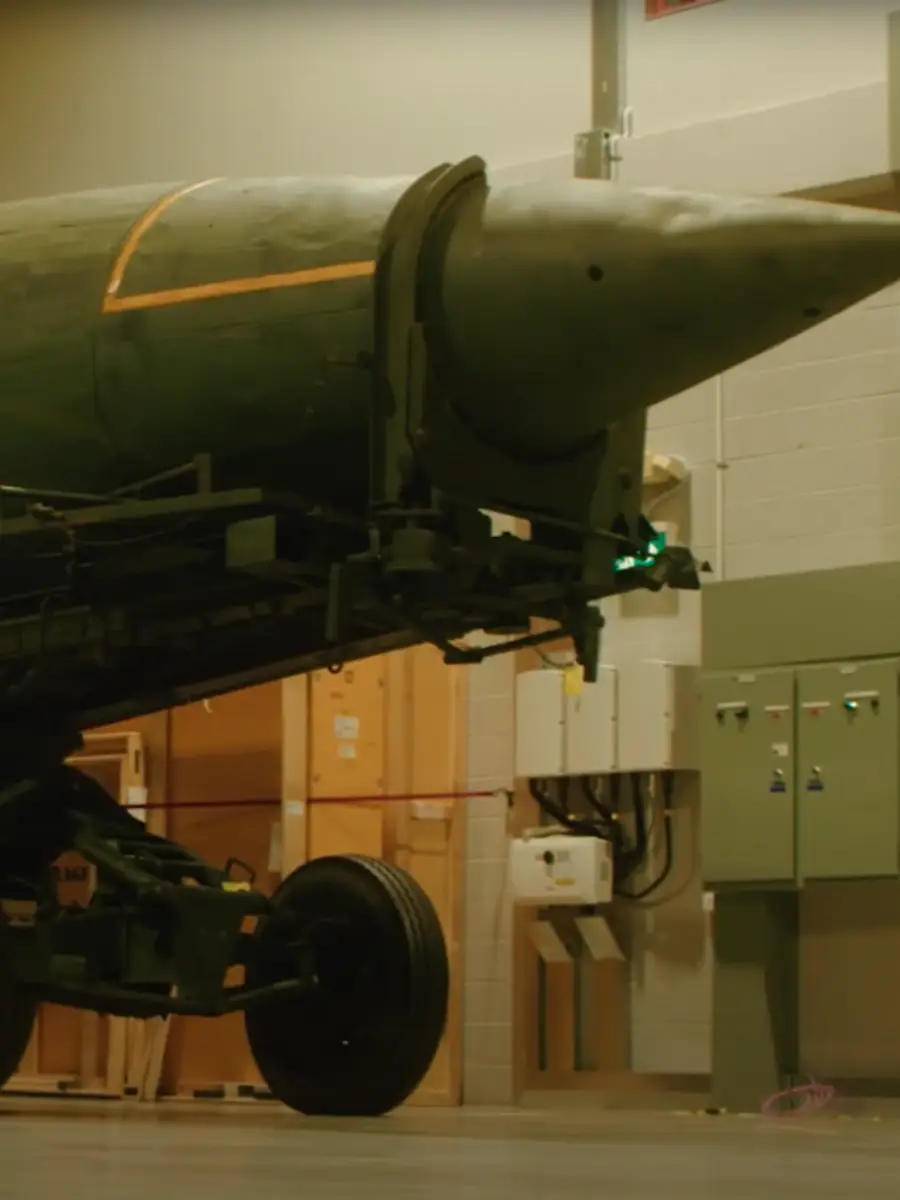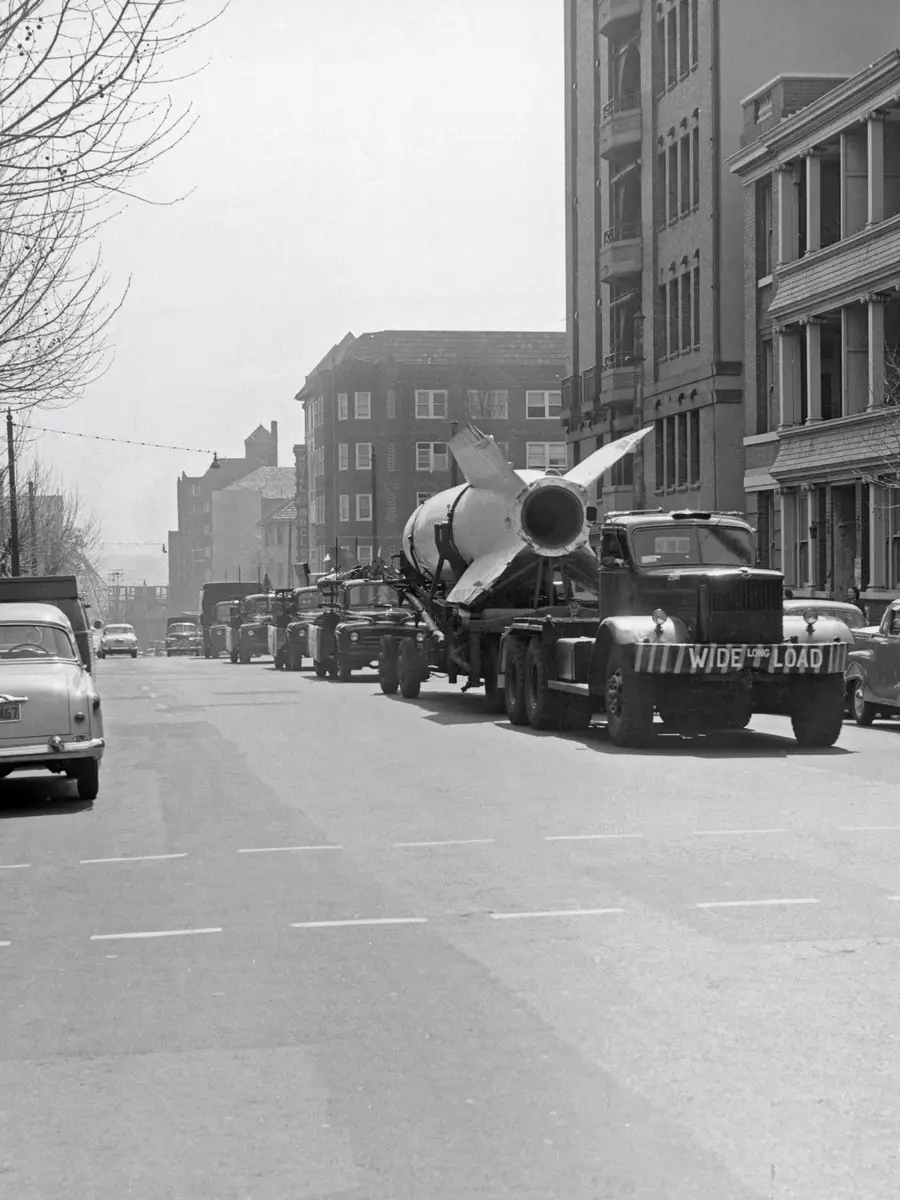The V2 rocket - or Vengeance Weapon 2 - was developed by Nazi Germany during the Second World War to retaliate against Allied bombing raids.
The V2 rocket - or Vengeance Weapon 2 - was developed by Nazi Germany during the Second World War to retaliate against Allied bombing raids.
It was the world’s first long-range guided ballistic missile and a great advance in rocket technology.
The V2 was designed by Wernher von Braun and his team. First launched in 1944, it could travel at supersonic speeds, making it nearly impossible to intercept, and delivered devastating attacks to cities such as London and Antwerp.
The V2 caused significant destruction and loss of life. But it also marked the dawn of modern rocketry, laying the technological foundation for space exploration and military missiles during the Cold War.
Its history is a complex legacy of scientific innovation and human tragedy.
In Germany, the land of its birth, it was called the A4 Rocket. In Britain in 1944 it was known as V2.
V2 was a revolutionary rocket; the first object made by humanity that entered what we now know of as outer space. It flew at 5 times the speed of sound and would hit the ground at about 3.5 times the speed of sound, such a high speed that no one knew it was coming. It was immensely destructive.
And on the evening of the 8th September 1944 the first V2 landed in London.
The Allies, even though they knew that these rockets were being launched from occupied Europe were never able to interdict a single launch. It only had a flight time of about five minutes. Once it had taken off – that was it, it was on its path.
By contrast the V1 rocket bombs, which were being launched from the Pas-de-Calais, needed an immensely long, rigid structure to take them off the launch pad and they could be easily spotted from the air and attacked, and they were also very slow.
Fifty percent of V1s total of 8,000 launchings were brought down, but there was death and pain and chaos. Women and children headed the casualty lists.
During the Second World War, German bombers attacking British cities caused immense devastation and loss of life. Around 66,000 were killed and 2 million were left homeless. Around about 1,000 V2’s striked British targets. 1,600 were fired against the port at Antwerp, they were hitting Antwerp three times a day with one of these rockets. It created a climate of fear in the city.
The rocket is driven by the reaction of a jet of high speed gasses. This jet of gasses is produced in the venturai or combustion chamber in the rocket, by the combustion of alcohol and liquid oxygen.
This rocket required quite an investment in terms of people to make it and the Germans were using slave labourers – enforced workers, concentration camp workers. Of the about 60,000 slave workers who were involved in the V2 rocket program probably around about 26,000 died during the process. There was a huge human cost to it.
One of these prisoners was a man called Alexander Bartos. He was a Hungarian-Jewish forced labourer. He worked at the Dora camp in the Mittlewerk underground tunnels.
“My Dora number then was 101046 and I have the copy of the page on which I am listed – and it shows that I am the new transport from Flossenberg, my number and my new number. It’s on paper, they recorded it, it’s amazing.”
Many of them were housed at a place called Nordhausen concentration camp. Conditions both in the camp, and in the underground tunnels, were absolutely horrendous. There was a lot of sabotage, there were lots of reprisals taken by the Germans against the prisoners who did sabotage the work. It was a real indictment on humanity.
“My chances of being hanged one day would be the same if I did my work correctly or if I also occasionally left the wire loose. We all knew that. So that was a very stupid system. By knowing that you have the same chance of being executed if you do something or if you don’t, naturally you do.”
Finally at the front of the rocket, we have the control compartment and the warhead.
The V2 rocket as we know it now was actually called by the Germans ‘the aggregate four’. It was one of a series of rockets that the Germans tested. Initially testing near Berlin, towards 1936 testing moved to Peenemunde on the north coast of the Baltic. The aggregate four was tested and successfully fired in October 1942 for the first time where it entered outer space.
In 1943 the Allies destroyed some elements of the testing facilities, production facilities and rail systems.
The Germans fired their last rocket against Britain in March 1945.
After the war, the British, the Americans and the Russians were very eager to get their hands on the technology.
We collected damaged rockets from all over Germany and decided that the German scientists and technicians would fire some more rockets, but this time under British control.
The British had their own operation – Operation Backfire – and our rocket is a survivor of that operation.
Much of the rocket equipment has been blown up by the retreating Germans. We had to reassemble it, find out how it worked and make new equipment for ourselves. We made new vehicles and we finished by making complete rockets from captured equipment.
The Americans had an operation called ‘Paperclip’ and this was all done to gain ascendency over the Soviet union.
We cannot afford to be complacent about and rockets and the potentialities in the future. The record of this film is a warning that we’ve got a lot to think about.
The V2 was seen as the ancestor of modern ballistic missiles and also has a great role in the rocket program that saw people go into outer space.
In our next video we’ll take you behind the scenes to look at the work done to restore and conserve the V2 rocket.


